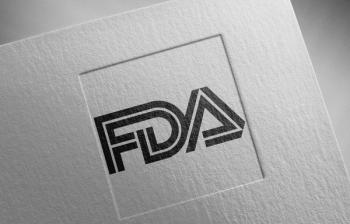
- Winter 2008
- Volume 7
- Issue 5
Do Breast Self-Exams Save Lives?
The validity of performing monthly breast self-exams to improve survival rates is again being questioned.
The validity of performing monthly breast self-exams to find cancerous tumors early enough to improve survival rates was brought into question again this past summer when an updated review of a 2003 analysis was published in The Cochrane Library.
The review examined two population-based studies comparing breast self-exams with no intervention and found that self-exams didn’t reduce a woman’s chance of dying from breast cancer. In fact, says the review, it may do more harm than good by increasing the number of unnecessary biopsies performed and the level of emotional stress women experience when they find benign lumps.
The report looked at merged data from randomized trials of 388,535 factory workers in Shanghai, China, and St. Petersburg, Russia. (Although women from Moscow were included in data from a 1999 report, they were excluded from the final results published in 2003.) In both studies, women were trained to perform breast self-exams. The updated Cochrane Library review of the studies concluded that “these trials did not find a beneficial effect of screening in terms of improvement in breast cancer mortality.” And, said the report, the women who were randomized to the breast self-examination arm of the trial were nearly twice as likely to have a breast biopsy—3,406 biopsies with benign results were done in the screening groups compared with 1,856 in the control groups.
“That’s the downside to doing breast self-exam in the general population, because women will find more lumps and then they’ll have to go through all the diagnostic procedures,” says David Thomas, MD, DrPH, epidemiologist at Seattle’s Fred Hutchinson Cancer Research Center and lead author of the Shanghai study. “We found in our study that the women in our instruction group had a lot more benign lumps and biopsies than the women in the control group, and yet the practice of BSE didn’t improve their chances of surviving breast cancer.”
Although the recent report made headlines when it was published in July, doubts about the benefits of breast self-exams have been brewing for years. In 1998, the National Comprehensive Cancer Network, an alliance of 21 of the world’s leading cancer centers, released guidelines stating that self-exams were an option rather than a standard of care for women who get annual mammograms by age 40 and clinical breast exams by age 25, because there was no evidence that self-exams increased breast cancer survival.
In 2001, the Canadian Task Force on Preventive Health Care issued a report saying doctors should stop advising women between the ages of 40 and 69 to perform breast self-exams. It was a review of these and other reports that led the American Cancer Society in 2003 to stop recommending that all women routinely perform breast self-exams and instead make it optional.
Recommending breast self-exams was a carryover from the days before mammography, when it seemed logical that a woman could find her own lump and get medical attention, says Debbie Saslow, PhD, director of breast and gynecologic cancers at the ACS. “But the findings of [various] studies were so discouraging in terms of not seeing any benefit, the ACS said we’re going to let women decide whether they want to do BSE or not.”
The ACS guidelines state that women should understand the benefits and limitations of breast self-exams, and be more aware of how their breasts normally look and feel and consult with their physician if they notice changes. But other medical experts disagree.
“Right now, we have the doctor’s examination, mammography, and a woman’s self-exam. I object to abandoning the one that is the most convenient and least costly,” says Marisa Weiss, MD, director of breast radiation oncology at Lankenau Hospital in Wynnewood, Pennsylvania, and founder of Breastcancer.org. “And the other consideration is that many women don’t have access to medical care, to mammography, and about 20 percent of breast cancers are detected by physical exam alone. So if you tell women not to do a breast self-exam then you’re missing the opportunity for them to have the earliest form of detection in their setting.”
So, should women perform monthly breast self-exams? Saslow says it’s up to individual women to make the decision based on their comfort level as long as they’re aware of the limitations of breast self-exams and the possibility of increasing the chances of a biopsy for benign findings. “But please get annual mammograms starting at age 40, or an MRI in addition to a mammogram starting at age 30 if you have a [genetic predisposition or] strong family history of breast cancer,” says Saslow.
Articles in this issue
about 17 years ago
Message from the Editorabout 17 years ago
Letters from Our Readersabout 17 years ago
An Update From Friendsabout 17 years ago
New Law Protects College Students' Health Insuranceabout 17 years ago
Newman Passes, Cancer Aid Goes Globalabout 17 years ago
9th Annual Conference for Young Women Affected by Breast Cancerabout 17 years ago
YMCA and LAF Develop Exercise Programsabout 17 years ago
Q&A: CT Colonographyabout 17 years ago
Finasteride Comes Out on Top in Prostate Cancer Trialabout 17 years ago
Crazy Sexy Cancer Survivor



